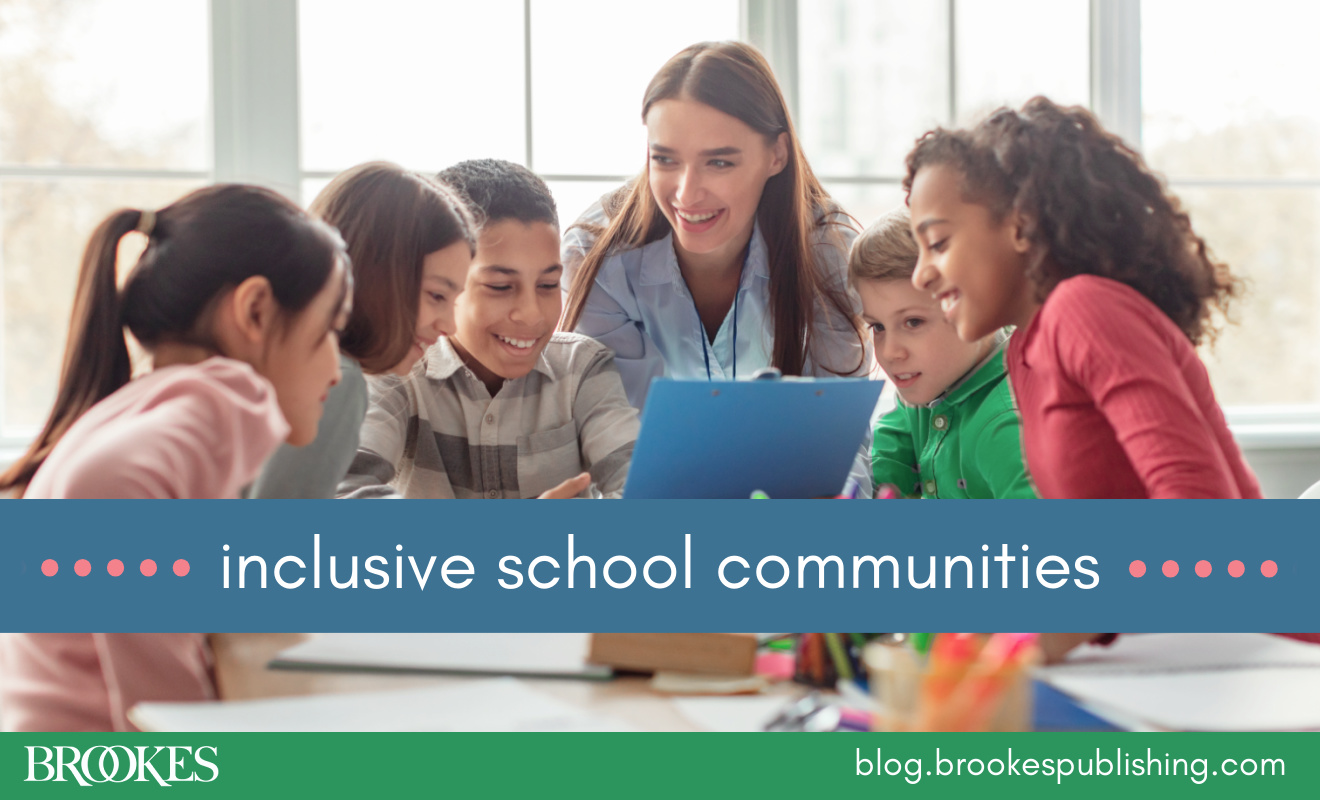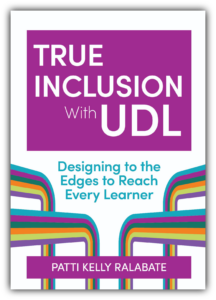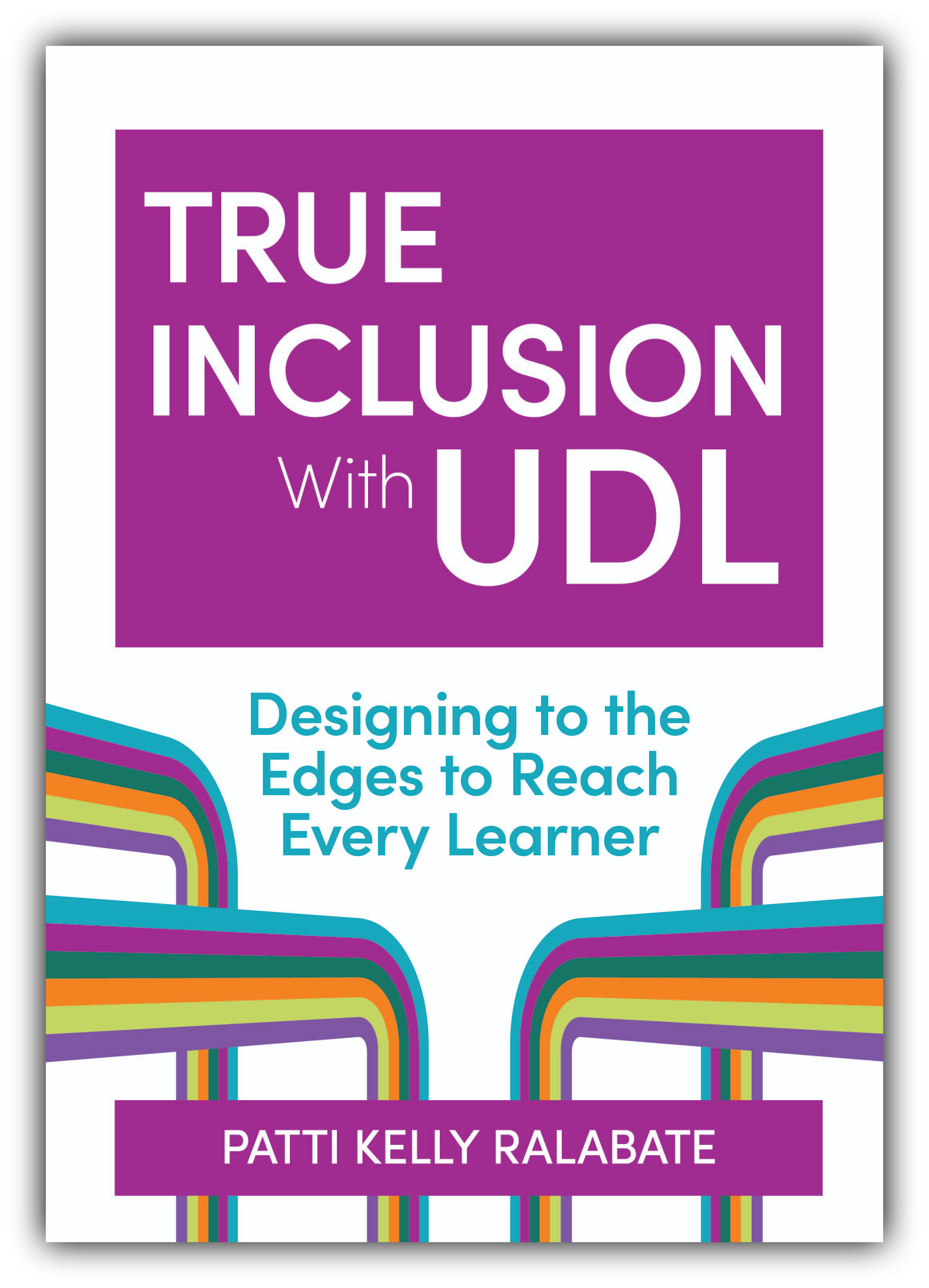Tips for Inclusive School Communities: Building Belonging & Equity
February 20, 2024
 How can you promote equity and belonging in your inclusive school community? Try the tips in today’s post, excerpted and adapted from the new book True Inclusion With UDL by Patti Kelly Ralabate. Explore eight key elements of an inclusive, culturally responsive community—and for each one, discover specific aspects of equity and belonging to focus on.
How can you promote equity and belonging in your inclusive school community? Try the tips in today’s post, excerpted and adapted from the new book True Inclusion With UDL by Patti Kelly Ralabate. Explore eight key elements of an inclusive, culturally responsive community—and for each one, discover specific aspects of equity and belonging to focus on.
Element #1: Values and Beliefs
To promote equity…
- “All families want the best for their children” should be a core belief.
- School leaders should communicate the importance of family engagement and the belief that all families add value to the school community.
- School leaders should collaborate with teachers, staff, and stakeholder groups to conduct regular equity audits.
To promote belonging…
- Ensure that terminology includes a variety of family arrangements.
- Family and community engagement must be viewed as a shared responsibility among school leaders, teachers, staff, and family and community members.
- Educators, students, and families should jointly develop aspirational postschool goals and individually focused learning plans.
Element #2: Trust Relationships
To promote equity…
- Make sure every family receives good news at beginning of year (a welcome postcard, good news phone call/email).
- Engagement should be regularly assessed and approaches adjusted.
- School decision-making should proactively include families and community members.
- School leaders and teachers should encourage opportunities for family and community members to share interests and concerns without interruptions or judgement.
- Ensure that everyone has access to ample snacks at meetings and events to accommodate attendees who come directly from work or those with food insecurity.
- Equity ambassadors must look for opportunities to foster equity in the community (e.g., connecting with community and faith-based organizations).
To promote belonging…
- School staff should greet learners every day using greetings in their home language, as appropriate.
- Communication must be ongoing and positive and use a growth mindset approach.
- Conduct regular surveys to gauge belonging and respect among students, families, and staff.
- School leaders should share disaggregated outcome data with family and community members.
- Ensure that symbols, including school mascots, respect cultural identities.
- Have student ambassadors help with orientation tours.
- Respect the privacy of families and community members.
Element #3: Two-Way Communication
To promote equity…
- Use school events, home visits, and communications to share what the students are learning.
- Ensure that locations for events are convenient and accessible.
- Make school calendars accessible online (with translation).
- Parent–teacher conferences, curriculum nights, and home–school events should include options for transportation and childcare.
- Ensure access for every community member by using multiple languages, Braille options, audio versions, a variety of communication technologies (emails, phone calls, texts) and digital media such as websites and newsletters.
To promote belonging…
- Align the school calendar with family work schedules, holidays, and celebrations.
- Be sure that events (e.g., athletics, arts, parent–teacher association/organization) offer accessible technology/digital options to allow family members with work or home commitments to attend and participate.
- School leaders, teachers, and staff should interact regularly with students, families, and community members and consciously attend to their sense of belonging.
- Educators can make home visits at transition points to assist with adjustments.
Element #4: Safety
To promote equity…
- Teachers, counselors, school leaders, and staff should participate in professional learning focused on how biases may impact their work with families.
- School events such as career days, cultural celebrations, science fairs, and music performances should be planned without stereotyping and in identity-safe ways
To promote belonging…
- All educators and staff must work to eliminate stereotype threats and microaggressions for students and families.
- Discipline and behavioral programs should take a conflict resolution and/or restorative justice approach to repair relationships and avoid the use of zero tolerance, seclusion, restraint, or physically or severely punitive consequences.
Element #5: Partnerships & Shared Decision-Making
To promote equity…
- Representatives from teachers, staff, families, and the community, including traditionally underrepresented or marginalized groups, should serve on stakeholder groups.
- Stakeholder groups should work with school leaders to collaboratively develop and revise policies, procedures, and rules.
- School leaders can regularly survey families, students, and staff about partnership effectiveness and share disaggregated data with family and community members.
- A diversity and equity council can explore disaggregated data with the goal of understanding the root causes of inequities in the community.
To promote belonging…
- Stakeholder groups should collaboratively create and update mission, vision, and core values.
- Teachers, counselors, and school leaders should receive professional learning on culturally responsive practices for family engagement.
- Schools can provide a parent/family room or center for meetings, resources, and volunteer workspace.
- Schools can establish home–school book study groups to learn together about relevant community issues.
Element #6: Resource Assets
To promote equity…
- Schools should offer quality mental health and social-emotional learning opportunities to all learners.
- Families should receive information and access to community services: public libraries, summer programs, continuing education, family counseling, food banks, and health clinics.
- At least annually, survey families and community members to identify talents and skills.
To promote belonging…
- Community organizations can speak at school assemblies and in individual classrooms about resources in the community.
- Schools can offer adult education courses on topics such as literacy and general educational development.
- School staff and community members can work collaboratively on student volunteer and service programs (neighborhood clean-up, recycling, food banks).
Element #7: Cultural & Social Capital
To promote equity…
- School leaders should establish family advocates, liaisons, or coordinators who can make connections with families and build social networks.
- Schools can offer programs such as wellness fairs to assist families with health, nutrition, and employment access.
To promote belonging…
Educators should use a strength-based approach to learn about the cultures in the community by reading, participating in community events, asking questions, and/or visiting local shops and eating at local restaurants.
Element #8: Curriculum & Instructional Practice
To promote equity…
- Performance expectations for all teachers and staff should align with the school’s mission, vision, and values.
- Teachers should participate in professional learning focused on how family members can support student learning at home.
- Families must receive accessible information on student expectations and skills required for all subjects.
To promote belonging…
- Performance expectations for all teachers and staff should be consistent with culturally responsive practice.
- Community representatives should have opportunities to suggest relevant cultural topics for inclusion in curriculum and lessons.
- Educators, families, and students should jointly develop relevant individual student expectations.
- Information on student goals, homework policies, and how to help at home should be translated as needed for families.
Want more guidance on creating school communities that are welcoming, respectful, engaging, and safe for every learner? True Inclusion with UDL is scheduled for publication in March 2024; order your copy today!





Write a Comment
Your email address will not be published. Required fields are marked *
Post a Comment